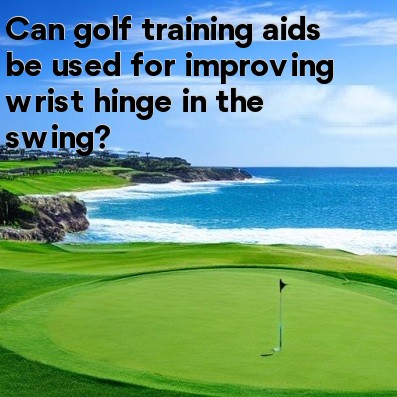
Golf training aids can be a valuable tool for improving various aspects of your game, including the all-important wrist hinge in the swing.
Wrist hinge plays a crucial role in generating power and control in your golf swing. When you hinge your wrists correctly during the backswing, you set yourself up for a strong and efficient downswing, allowing you to hit the ball with more distance and accuracy.
There are several training aids available that can help you improve your wrist hinge:
- Golf wrist trainer: This device is designed to help you develop the proper wrist hinge by restricting the movement of your wrists during the backswing. By limiting excessive wrist motion and promoting a more controlled hinge, a golf wrist trainer can help you develop a more consistent and powerful swing.
- Alignment sticks: Though not specifically designed for wrist hinge improvement, alignment sticks can be a useful tool in training and monitoring your wrist hinge. By placing an alignment stick along your target line and focusing on keeping your wrists in the proper position throughout your swing, you can gradually improve your wrist hinge.
- Golf swing analyzer: While not a physical training aid, a golf swing analyzer can be a beneficial tool for monitoring and analyzing your wrist hinge. These devices use motion sensors to capture data about your swing, including clubhead speed, swing path, and wrist angles. By reviewing this data, you can identify areas where your wrist hinge may need improvement and make the necessary adjustments.
When using golf training aids to improve your wrist hinge, it's important to remember that consistency and repetition are key. Practice regularly with the aid to reinforce the correct wrist hinge motion and build muscle memory.
In addition to using training aids, there are also some drills and exercises you can incorporate into your practice routine:
- Wrist hinge drill: Take your address position with a club and rotate your lead wrist, creating a 90-degree hinge. From there, slowly swing the club back and forth, focusing on maintaining the hinge throughout the motion. This drill helps you develop the feel and muscle memory for a proper wrist hinge.
- Forearm strength exercises: Strong forearms are essential for maintaining a consistent and powerful wrist hinge. Incorporate exercises like wrist curls, wrist extensions, and forearm rotations into your strength training routine to improve the strength and stability of your wrists.
- Slow-motion swings: By performing slow-motion swings, you can focus on the movement of your wrists and ensure that you are executing the proper hinge. Pay attention to the position and angle of your wrists at various points in the swing, making any necessary adjustments to achieve the correct motion.
Overall, golf training aids can be a valuable tool for improving your wrist hinge in the golf swing. Whether you choose to use a specific training aid or incorporate wrist hinge drills into your practice routine, consistent practice and feedback are essential for making lasting improvements. With dedication and the right training aids, you can develop a strong and efficient wrist hinge, leading to improved power and accuracy in your golf game.





